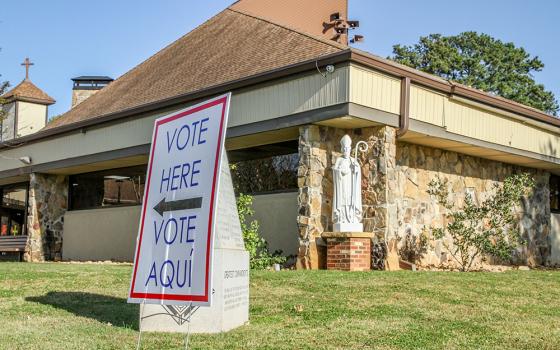Sandra Schneiders, a Sister of the Immaculate Heart of Mary and professor of New Testament Studies and Christian Spirituality at the Jesuit School of Theology of Santa Clara University in Berkeley, California, has recently published an extensive study of Religious Life as a prophetic life form in National Catholic Reporter's online edition Jan. 4-8.
This week's and last week's columns highlight the major points of that substantial article.
Twentieth-century American nuns, dressed in 18th-century European garb, "bore very little resemblance to their pioneer forebears," some of whom lived in log cabins, braved the bitter winters of the great plains or the scorching heat of the southwest, and traveled by boat, covered wagon, on horseback, by steam engine, and on foot.
"They nursed on the battlefields, on shipboard, and among the victims of epidemics. They founded schools for native Americans, Blacks, and the Appalachian poor and were admitting to their schools and hospitals people of color well before it was legal. They ministered to soldiers and miners and railway workers, to women of 'ill repute' and addicts and criminals, and to the orphans whom such populations inevitably leave in their wake." The Sisters rarely made any distinction between Catholics and non-Catholics.
In lifestyle, there were changes in habit, housing, and horarium (that is, the carefully scripted schedule for prayer and other activities inside the convent). "As religious adjusted their lifestyles to facilitate their expanded involvement in more diversified and individualized ministries they naturally took control of such lifestyle issues into their own hands."
These changes also affected the way Religious lived in community. They began following in earnest the council's People of God ecclesiology, stepping "out of the pyramidal structure that had controlled their lives up to that point." This led to egalitarianism within the community, a collegial form of governance, team-leadership, dialogue and discernment, subsidiarity, and a "non-coercive exercise of authority."
All of this represented not change for change's sake, but an enhancement of the Sisters' ministries and prophetic vocation. Religious thereby subverted "the domination system of the patriarchal Church by incarnating in their community life an alternative not only to patriarchy but to all forms of coercion-based exercise of power."
These changes in lifestyle and community life were internal to Religious Life. A third change–in ministry–that was also brought about during the post-conciliar renewal affected the Church beyond Religious Life.
"Sisters were now ministering in prisons, with undocumented immigrants, in inner city shelters, on Capitol Hill, in spirituality centers open to all faiths or none, with the homeless, with torture victims, with the dying who were alienated from the Church, and in myriad other situations in which there were no easy answers and the stakes for real people were as high as they were for the woman taken in adultery to whom Jesus proclaimed the Reign of God as compassion redefining justice."
The exercise of these ministries often placed Sisters at odds with ecclesiastical authorities, who, appealing to "obedience," sought to control such activities. (Sister Schneiders cites the episode in Acts 5:19-42 as a model of what real obedience means.)
Religious women happen to be caught in the ecclesiological crossfire. The Vatican's efforts to "rein in" women Religious (but not men Religious) have to be seen always in this context.
Those who implicitly regard Vatican II as a terrible mistake support these efforts. Those who regard the council as a "new Pentecost" support the Sisters.
© 2010 Richard P. McBrien. All rights reserved. Fr. McBrien is the Crowley-O'Brien Professor of Theology at the University of Notre Dame.



